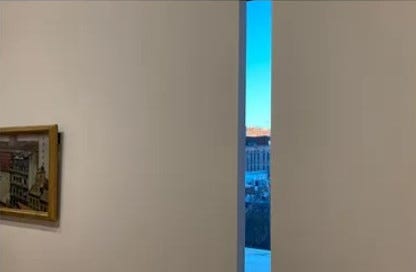Should the Whitney repatriate its looted Hoppers? And if so, where?
Wouldn’t it be nice if every publication or exhibition catalog came with the same disclaimer you find at the tail-end of institutional e-mails:
“I acknowledge that my writing is built from the writings of all sorts of people. My book/article/catalog is a Safe Zone for individuals of all ethnicities, abilities, religions, sexual orientations, and gender identities.”
Even the writings of art historians. Gail Levin is an authority on Edward Hopper: former Hopperologist-in-Chief at the Whitney, author of catalogs and monographs. I was her research assistant, briefly, though my contributions are hardly worth acknowledging. Still, I’m proud and honored to have been associated with someone who just had an article keboshed by the Art Journal, the strong arm of the Art-Historical Hegemon. The article’s here: https://substack.com/inbox/post/109919280. And you’ll find some of the same background information in the New York Times.
Turns out the Whitney’s Hopper show and its voluminous Hopper archive are built on thefts from two New York indigenous artists, Edward and his partner Jo. A chunk of the Whitney’s Hopper holdings came to the Museum from a dastardly Baptist pastor who, says Levin, wormed his way into the affection and trust of Edward Hopper’s aging sister like some art-world Bernie Madoff. Stolen goods. Ill-gotten paintings. Is it a coincidence that the Whitney’s long-time director has resigned? How should I know, I’m just the research assistant.
And what about the Hoppers? Will they be returned to their indigenous community? The most telling part of Levin’s review is the one I should have noticed long ago: there are no people of color in Hopper’s paintings. Come to think of it, there aren’t even markedly ethnic people, from an artist whose studio faced the Italian Village. Levin quotes from the artist Guy Pène du Bois, a close friend of Hopper, who, in an essay for the first Whitney Hopper retrospective in 1931, called Hopper “the most inherently Anglo-Saxon painter of all times.” The statement has a whiff of what the art patron John Quinn called “Ku Klux Criticism,” back in 1921. The implications were no different then than they are today.
Levin thinks the Whitney should have broken with its see-no-evil approach to Hopper; no easy ask at a time when “see no evil” is the guiding principle of the suits who guide the Museum Industry today. Too bad: the Whitney just missed an opportunity to mount a truly original exhibition, one that would make the suits happy and the curators work their brains to get over: Hopper and Impressionism. The suits get happy because Impressionism sells, at least the kind of “Impressionism” museum publicists and trustees imagine Impressionism to have been: pleasures of bourgeois life and all that. And, for those who like a challenge: just as the Impressionists presented a mirror to the triumphant bourgeoisie so, too, Hopper mirrors the cultural and emotional rot of the White American Lower Middle Class of his day, and ours.
Even a dying class deserves its relics, all the same. Returning the stolen artifacts to the old Whitney building on the Upper East Side wouldn’t do: right skin, wrong class. Certain sections of Queens and Long Island would be more appropriate, or maybe the Crystal Bridges Museum in Bentonville, Arkansas, founded by the Walmart family. That should dispense the clueless, powerless, middle-aged White folks from coming to New York, to see themselves reflected here as clueless, powerless, and desperately satisfied—in other terms, as “real” New Yorkers. Or they can read the Style section of the New York Times.
WOID XXIII-09



